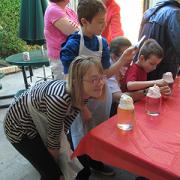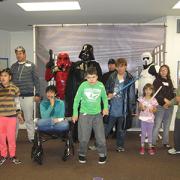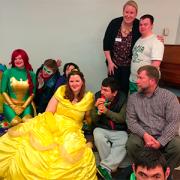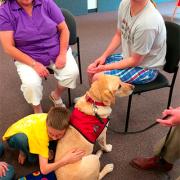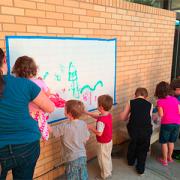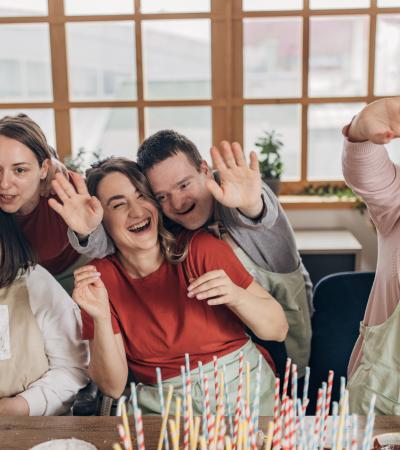School-Age Sensory Fun is a monthly, activity-based program for individuals with special needs. The focus is on youth in elementary through high school, although no one is ever turned away. This program is aimed at those on the autism spectrum, but all youth with special needs, and any non-affected siblings and friends, are welcome.
Advanced Planning
School-Age Sensory Fun evolved from our special-needs Sensory Storytime, a program aimed at preschoolers that ran from 2011 to 2013 out of the Kearns Library. I discovered a gap in services for older youth with special needs after putting on Sensory Storytime for a few years.
In 2012, I conducted an online survey of local parents to determine their needs, and the overwhelming response was that there was not enough programming for this special-needs population. Even though I was already familiar with this population, I discovered that I still had much to learn. I did more research on autism and how it affects older individuals differently. I also talked to special educators about how they structured their classes, which helped me determine my three focuses for the program: transitions, social skills and sensory activities.
Marketing
After putting on Sensory Storytime for a few years, I already had a base of attendees. However, I still marketed the program heavily. I attended outreach events, presented at autism conferences and am part of several special-needs Facebook groups. I also run an email group and send out reminders, as well as information from the community.
The attendance of School-Age Sensory Fun is smaller than Sensory Storytime, but that is because I'm working with a smaller affected population. I have always had good attendance for this program, despite the smaller size.
Budgeting
I spend between $250 and 500 on this program annually, which mainly goes toward crafts and activities. I have had some parents who attend the program and donate materials, and I borrow a lot of things as well. In 2013, I was awarded a Library Services and Technology Act (LSTA) grant, which helped provide funds to purchase 12 mini iPads and apps to use in the program.
The program does not need to cost a lot. I have found the special-needs community more than willing to support the program through volunteer hours and donations. I have also been able to use many of my own materials or borrow other libraries' content.
Day-of-event Activity
I arrive an hour early to set up for this program so I can be ready 15 to 30 minutes before the scheduled start time. I do this for my attendees who prefer to come earlier, when it's less crowded, so they can explore and feel comfortable in the space. I rely heavily on a dedicated volunteer to help me set up and take down, as well as prep crafts and activities. I have been lucky to have her since 2011, when Sensory Storytime began.
Program Execution
It is difficult to run this program with just one person because the group is high energy. It can be done, but it is easier with volunteers.
The program is held once per month on Saturdays. I have anywhere from 3 to 30 affected individuals at each program. The attendance varies based on what is happening that day and if any community groups attend. I have also had several fairly regular nonprofits and school groups bring people out to attend.
I set up stations around the room with various activities and work hard to encourage the participants to move to every station. I have done this with incentives and by using music to cue when to move on. Transitions are hard for some with cognitive illness, so that is one of the focuses.
I also put together a take-home sensory craft for attendees. They like to take something home and love art. Typically, I have something that just requires coloring or hands. Some of the participants have trouble with fine motor skills, so our sensory crafts cater to that. (There are usually no scissors involved.)
I always have a theme for the program, and about every three to six months I invite a costume group to the program. This group loves seeing superheroes, "Star Wars" characters, Disney princesses and more. They get very excited by those visits.
For evaluations, I had paper surveys in the beginning to get feedback and ideas for furture programs. I also created paper and online surveys to determine the best apps and technology to use.
Advice
Don't be afraid. I have heard feedback from others that they are worried about starting this type of program. When a 3-year-old gets upset, it's cute, but with a 13-year-old, it’s different. I believe the fear of fits, noise and the unknown prevents some people from trying this.
In my experience, these are loving and kind kids. Yes, sometimes they get upset, but I have never felt uncomfortable. I let the caregiver and/or parent take charge of the situation and stand back. Don't be afraid; this is a program the community desires and a gap in services we should be providing.
Supporting Materials
- Feedback (Coming Soon!)
- Programming Librarian Facebook Group

